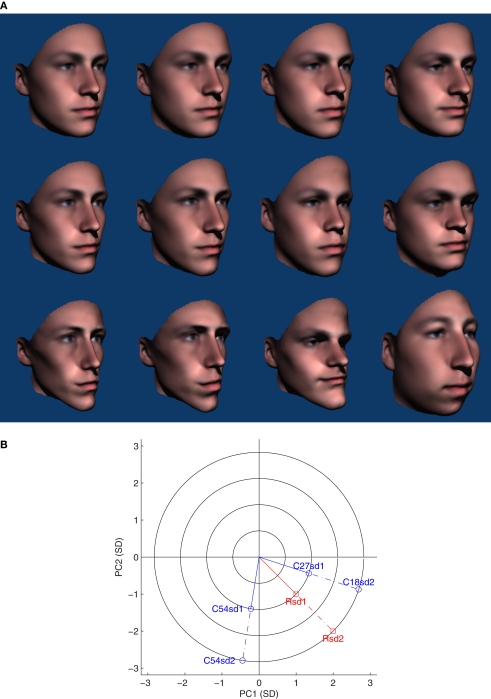Figure 5.
(A) Example stimuli from Experiment 3. The rows show 0.5, 1.0, and 2.0 SD conditions respectively. The first column shows one of the reference faces used and corresponds to 50, 100, and 200% caricatures of that face. The following three columns show random examples of 27°, 54°, and 81° comparison faces used in each condition. P50 was found to be slightly to the right of the third face in the first row (59.4°) and to the left of the third face in rows two (48.9°) and three (51.0°). All faces shown here at an angle of 30° but in the experiment all faces were shown as animation appearing to rotate between −45° to 45°. (B) Two-dimensional illustration of the relationship between reference and comparison faces in Experiment 3. Concentric circles show the four levels of distinctiveness used, 0.5, 1, 1.5, and 2 SD. Reference faces for the 1 and 2 SD conditions are indicated in red as R1SD and R2SD respectively. Corresponding comparison faces are shown in blue. C1SD27 and C1SD54 are possible 27° and 54° comparison faces for the R1SD reference face. C2SD27 and C2SD54 are the equivalent comparison faces for the R2SD reference face. The angle subtended at the origin remains constant between conditions but the distance between equivalent reference and comparison faces is greater for the 2 SD faces.

